Effects of table saw misalignment
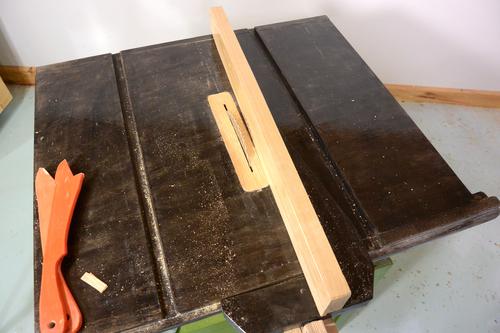 When I wrote about my homemade table saw, a number
of people commented that this saw works much better than their
cheap ($150) table saws.
When I wrote about my homemade table saw, a number
of people commented that this saw works much better than their
cheap ($150) table saws.
I don't expect this saw to be much better than a cheap table saw, so it occurred to me that some people's saws may be performing worse than they could because of misalignment.
So I thought I'd demonstrate the effects of a rip fence misaligned with the blade.
for my first test, I'm misaligning the fence to diverge from the blade as shown here, but misaligned only slightly.
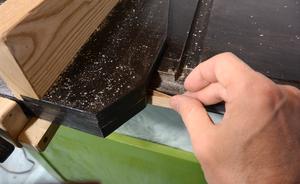
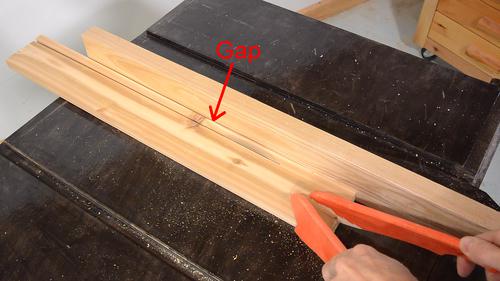 For this cut, I misaligned the fence by inserting about 2 mm of shims behind
the fence T-square on the right side. This misaligns the fence by
about 0.25 degrees.
For this cut, I misaligned the fence by inserting about 2 mm of shims behind
the fence T-square on the right side. This misaligns the fence by
about 0.25 degrees.
The resulting cut works ok, but the wood keeps pulling away from the fence. The blade keeps pushing the wood to the left. This results in a piece that gradually becomes narrower than what the fence is set to.
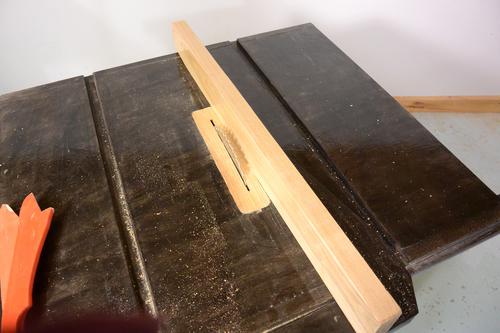 A more dangerous situation is to have the fence converging on the blade,
as shown at left (again, much exaggerated to illustrate). My actual
fence misalignment was much less.
A more dangerous situation is to have the fence converging on the blade,
as shown at left (again, much exaggerated to illustrate). My actual
fence misalignment was much less.
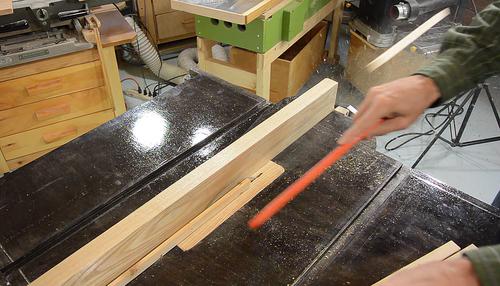 With the fence misaligned this way, the blade keeps pushing the
stock towards the fence. The blade will end up flexing a bit to the left, and
the fence, if it has flex, flexes to the right, resulting in a cut piece
that is slightly wider than the fence was set to.
With the fence misaligned this way, the blade keeps pushing the
stock towards the fence. The blade will end up flexing a bit to the left, and
the fence, if it has flex, flexes to the right, resulting in a cut piece
that is slightly wider than the fence was set to.
But a far more serious problem is that with the wood pinched between the fence and the back of the blade, that will have a tendency to lift the wood. If the wood is not held down all the way, there is a good chance that the wood will get lifted on top of the blade. Once on top of the blade, the teeth of the blade may launch the wood forward.
With this thin piece of wood I ripped here, it was launched straight at a good speed (see piece top right of frame)
This sort of kickback can be much worse with a larger workpiece, though I wasn't daring enough to try that.
But imagine this piece of wood getting pushed with just one push stick. Towards the end of the cut, the back of the blade will start to lift the wood and pull it forward. It's not unlikely that the wood might rotate (being pulled forward on the left) and in no time, it will be on top of the blade. The teeth of the blade then grab it and push it forward, over the blade, throwing it at high speed towards the operator.
This type of kickback can be prevented by having a saw with a riving knife or splitter (riving knifes are preferred, because splitters get in the way for so many cuts that nobody uses them), or by holding the wood down with two push sticks towards the end of the cut. Proper rip fence alignment also makes this much less likely to happen. I should add that I have never personally had this type of kickback happen.
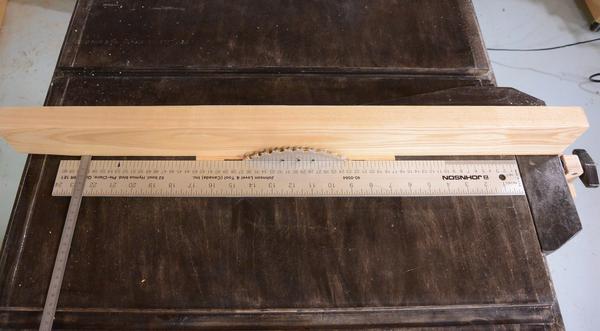 A simple way to check the alignment of your saw blade is to put a
2 foot (60 cm) ruler against the blade. Make sure both ends of the ruler
are between teeth. Then measure the distance to the fence on either end.
A simple way to check the alignment of your saw blade is to put a
2 foot (60 cm) ruler against the blade. Make sure both ends of the ruler
are between teeth. Then measure the distance to the fence on either end.
My test with the fence congerging, above, was done with the outfeed side of the fence 2 mm closer to the ruler than the infeed side, or about 2 mm in 600, or 0.2 degrees.
At half that misalignment, the workpiece was only ejected at moderate speed. So if you can get both ends to within half a millimeter of each other (easy enough to measure by eye and with a ruler) you will probably be ok.
After checking, rotate the blade by 90 degrees, check again, and repeat. Some inexpensive saws have blades that wobble a bit. If the blade does wobble visibly, proper alignment may not make that much difference. However, even a wobbly blade may end up wobbling less once it's cutting in a large piece of wood. The wood will often stabilize the blade.
I you don't have a riving knife, for small workpieces, ALWAYS use a second push stick to hold the piece as it comes out of the saw. And it's best to use longer push sticks like this style so that if something unexpected happens, your hands are less likely to contact the blade.
Finally, this video makes a good case for NOT using push blocks or any sort of pushing device such as L-shaped push sticks that requires you to get your hands closer to the blade. And I don't think that complicated jig called the GRR-ripper is a good idea either. It's too complex, needing to be set up, which means you mostly end up not using it. Safety devices unused don't help much, which is why they also need to be convenient.
See also:
Back to my Woodworking website.
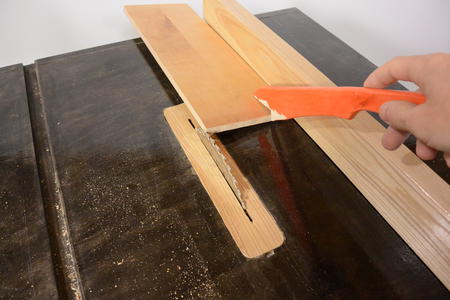
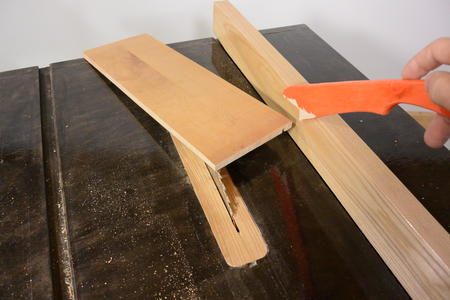
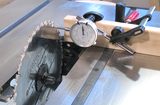 Table saw alignment
Table saw alignment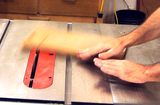 Freehand crosscut
Freehand crosscut Aligning the homemade table saw
Aligning the homemade table saw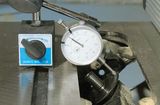 Fixing wobble in a
Fixing wobble in a